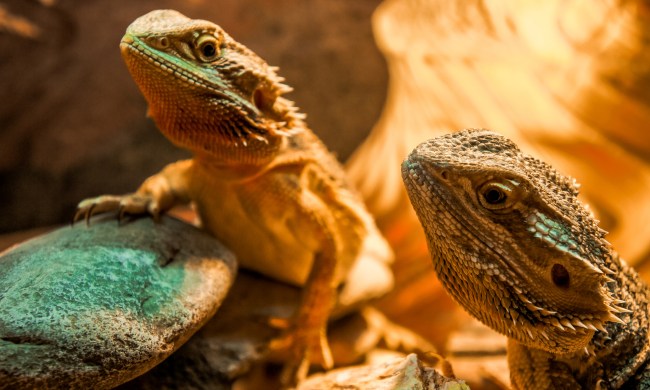Turtles have exploded in popularity, becoming one of the most coveted pets. They can be great additions to the family — while Testudines require some specialized care you don’t need to take them on daily walks. But along with the rise in turtle ownership, some other problems have emerged, like disease outbreaks and illegal trading. Because of these issues (namely salmonella), the sale of small turtles, set as those with shells of less than 4 inches, is banned in America.
So does that mean you can’t own a turtle unless you meet someone in a trench coat for the exchange? There’s a right way to go about this and we’ll tell you how.

What are the problems with owning a turtle?
Before you jump into any reptile ownership, you should carefully research their needs and behaviors. Because they’re an entirely different class of animals from us, they don’t necessarily act the way you might think. In addition to all the usual worries, like preventing animals from being kept in inhumane conditions, there are three main problems that can occur with irresponsible turtle ownership.
Salmonella
We noted at the top that turtles have been linked to salmonella outbreaks. You need to get your animal from a reputable pet store, preferably in your neighborhood and not online (where shady deals can be harder to spot). On top of that, the CDC recommends that no one keep turtles in a house with any humans under 5 or over 65 or who have a compromised immune system.
Illegal trading
As mentioned, more and more people are bringing home these beasties and as a result, some unethical importers have turned to wild-caught creatures. In many places, this is illegal, but that doesn’t stop people from capturing and then selling them to families. These actions have contributed to dwindling populations and low birth rates among some turtle species around the globe.
Abandonment
When you bring home any animal, you commit to them for life. In the case of a turtle, that could be decades. These pets are occasionally included in wills because they live so long! Because of that, they are often taken to a creek and let loose, sometimes with devastating results.
While all turtles might look the same to you, owners might be introducing a non-native species (and they might not be ready to face the great outdoors) into the wild. If you absolutely must rehome your animal, surrender them to a shelter.

How can I ethically add a turtle pet to my home?
Don’t worry. You can absolutely own a happy turtle for decades (since they’re one of the longest-living pets, though tortoises absolutely have them beat). By following these steps, you’re all but ensuring you’re being a safe, ethical, and legal turtle pet parent.
Research your breeder
We emphasize the importance of this, but it can be tricky, nonetheless. One option, consider adopting a turtle from a rescue or even a friend who can no longer care for them. Remember, you will have this companion for a long time, so it doesn’t matter if they’ve already got some life behind them. Alternatively, seek out a store with information about their breeding program and ask questions! You can also read reviews to confirm that the animals are doing well after they leave the shop.
Set up a good home
It’s best not to buy a pet on a whim. You’ll need to get their house set up in plenty of time before they arrive with all the correct lighting, accessories, and care items. The most important part of this is buying a tank that’s big enough for your animal. Turtles should never go in fish bowls or hamster cages, even if they look similar.
Feed and care for the turtle
All pets need to be taken care of and turtles are no different, which means a proper diet and enough exercise and stimulation plus the TLC you give to any scaly friend. Believe it or not, turtles can become attached to their people and even show affection, learn their names, and memorize a few simple tricks. Show them that you’re in their corner by always providing the best care (and turtle treats).
Plan ahead
Jonathan the tortoise celebrated his 190th birthday in 2022. For context, that’s the year Andrew Jackson was re-elected president (Jonathan’s lived through 40 of them). A turtle (or tortoise) might look appealing when you have elementary-aged kids and then seem like a burden after they leave for college. As soon as you begin the reptile conversation, discuss what your care plan will be if/when your little guy reaches a half-century in age.
Turtles make great pets, but it’s important that you fully commit to bringing home and raising an animal in the most ethical way possible. That means not buying a tiny reptile nor grabbing a little guy from a disreputable source, and also thinking through their care plan for decades to come (in case they outlive you or you wind up unable to keep them long term). And this is not to mention the daily feedings, cage cleanings, and substrate changings you’ll have to go through as part of regular maintenance. As long as you put in a little work beforehand, you can enjoy many Testudine occasions for the next 40 or so years.



